This year 2025 marks my 10th year as a full-time cryptocurrency trader. Last year, I spent a full 11 months on contracts, increasing my profit from 2,000u to over 20 million today, a 1,000-fold increase.
First of all, for an ordinary person, it should not be difficult to come up with, let alone 20,000 yuan.
Excluding the earliest players, and calculating based on time that ordinary people can understand, Big Pie has gone through four cycles from 2016 to today.
The price basically increases by 3-6 times in each cycle. Because you cannot buy at the absolute bottom or sell at the absolute top, we can cut off the beginning and end and calculate it as 4 times. 20,000 yuan in 4 cycles can become: 5.12 million.
If the initial capital is 50,000, do you know how much it will become after 4 cycles? 12.8 million.
Look at these numbers, can they help ordinary people turn their lives around?
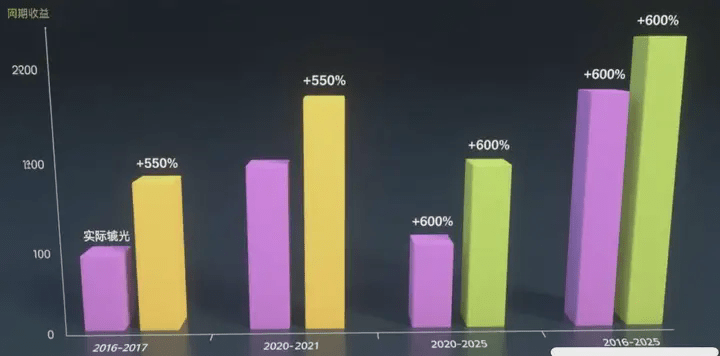
In the cryptocurrency world, if you want to truly achieve financial freedom and realize compound interest, methods and techniques as well as forming your own profit system are crucial!
Once you learn how to master it, the cryptocurrency world will be like your "ATM" and making money will be as easy as breathing!
After more than 10 years of cryptocurrency trading, my path to wealth can be summarized as follows:
The first ten million took the longest time and was the most painful. The trading system was constantly reshaped and polished, which took a year and a half.
The second 10 million took three months
The third 10 million took only 40 days
The fourth 10 million took only 5 days
75% of the funds were earned in half a year.
How I make money:
Optimal Contract Strategy for 300U Principal (Efficient Rollover Plan) [Worthy of Repeated Study]
Core Principles: Strictly separate positions | Trade only BTC+/ETH+ | Stop Loss > Take Profit | Limit 3 times
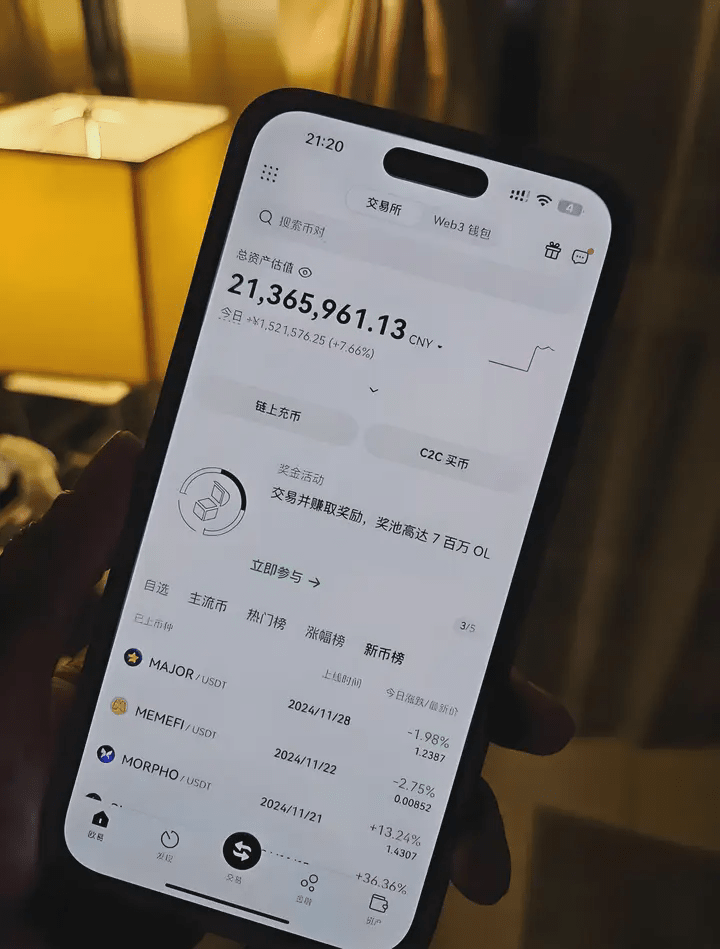
1. Starting stage: 300U→1100U (3-level sprint)
Strategy: 100U x 3 times, 10x leverage each time, 7% take profit/5% stop loss (profit-loss ratio 1.4:1)
Execution steps: Level 1 (100U→200U) Target: Profit 70U (7% take profit) Stop loss: -50U (5%) Success → Enter Level 2, Failure → Adjust strategy with the remaining 200U
Level 2 (200U→400U) Target: Profit 140U Stop Loss: -100U Success → Level 3, Failure → Remaining 100U Guaranteed
Level 3 (400U→800U) Target: Profit 280U Stop Loss: -200U Success → Principal reaches 1100U, enter stable strategy
A key discipline: 3 attempts at most! Regardless of success or failure, I will continue to adopt a conservative approach and only trade BTC/ETH, rejecting altcoins (which have poor liquidity and high risk of manipulation).
2. 1100U Stage: Three-Dimensional Matrix Strategy (Ultra-Short + Band + Trend)
Fund allocation: Ultra-short orders (300U) → 15-minute quick-in and quick-out swing orders (500U) → 4-hour level trading + profitable fixed investment in BTC
Trend order (200U) → Weekly big opportunity sniper reserve fund (100U) → Emergency replenishment/sudden opportunity
1 Ultra-short order (300U, intraday trading)
Strategy: 10x leverage, EMA12+MACD+(5,13,1) signal entry: 15-minute K-line breaks through the previous 3 high points + large volume stop
Profit: 3%~5% (flexible moving stop loss) Stop loss: 2% forced stop loss circuit breaker: 2 consecutive losses → pause for 1 hour
2. Band Single (500U, 4-hour level)
Strategy: 5x leverage, entry point when Bollinger Bands narrow and breakout: 4H Bollinger Band width < 20% of the annual line, long on upper band/short on lower band when breakout Stop-loss: 1.5x bandwidth Profit management: 40% of weekly profit will be invested in BTC
3. Trend order (200U, weekly opportunity) strategy: 3x leverage, wait for extreme market conditions: Weekly RSI+(14)<30 (oversold) or >70 (overbought); 3 consecutive daily K-lines in the same direction; 4-hour TD sequence +=9 (reversal signal); Take profit: Trailing stop loss, profit/loss ratio ≥3:1
3. Ultimate Risk Control (Life and Death Line)
Daily loss > 15% → Forced 24-hour break Weekly profit > 30% → Leverage halved the next day Monthly profit withdrawal 20% → Secure your profits
Summary: The first 3 stages (100U x 3 times) → Rapid accumulation of principal (1100U) → Ultra-short + band + trend combination discipline > technology! Refuse to carry orders and refuse to trade frequently
By doing this, you can not only earn high returns but also control risks. It is suitable for players starting from 300U!
Special Note:
1. Only do high-sell and low-buy of BTC/ETH
2. Use the 4H moving averages above the significant resistance level to determine when to enter a short position. For example, if the 60-day moving average above the 4H level is continuously suppressing the price, use this moving average as the entry point for a short position. Stop-loss: Set it at the previous high after a spike and then a pullback. For example, if the resistance level is 2440 and the spike reaches 2450, then place the stop-loss above 2450.
3. Generally, the lower support level of the same level or a higher level is used as the entry point for long orders in batches. Stop loss: It is placed at the previous low after the downward pin and subsequent rise. For example, if the support level is 2320 and the pin reaches 2310, then the stop loss is placed below 2310, around 2300.
4. Stop-loss principal: 20% of the total principal. If this amount is reached, no more orders will be opened on that day. Single-day operations are generally based on two transactions, with a single stop-loss control of 10%. The position size of a single order should be consistent.
5. Try to enter the market in batches instead of all at once! Try to follow the trend to open orders. When the main trend is short, try to open short orders, and vice versa.
① When the market trend is good, chase hot coins
②Control the profit and loss ratio to around 3:1
③ The daily stop loss retracement is 15%-20% of the principal. If it reaches this level, no more orders will be opened on that day.
④ Daily review
6. Crashing market: Wait for the market to open in batches. If there is no opportunity, just wait for the market to open. In this market, not losing money is equal to making money.
7. Guaranteed Win Stop-Loss: If the stop-loss condition is met and the K-line pattern of the same level is not broken, then the guaranteed win stop-loss pattern is not required. If either condition is not met, the guaranteed win stop-loss pattern is required. ETH: Guaranteed win after 20 points of floating profit BTC: Guaranteed win after 350 points of floating profit
8. Moving Take Profit: ETH: Move the take profit after 35 pips of floating profit, using 3/5 minute intervals for moving. BTC: Move the take profit after 500 pips of floating profit, using 3/5 minute intervals for moving.
9. 1. Never think of all-in gambling and getting rich quick. 2. Only follow your own market! Learn to hold short positions and don't force orders. 3. Don't place orders overnight. 4. Try not to place orders on weekends. 5. After being stopped out, keep your mind in check.
I have sorted out the essence of [RSI Band Trading]. "14 pictures teach you the ultimate secret of RSI Band Trading". As long as you master it, you can use this method to trade cryptocurrencies and your account is guaranteed to increase 30 times. Today, I have specially sorted out the dry goods and shared them with those who are interested. Please keep them well.
The Relative Strength Index (RSI) is undoubtedly one of the most commonly used technical indicators by traders worldwide. Developed by renowned Wall Street trader J. Welles Wilder, it's a momentum oscillator used to capture the speed and variability of price movements.
To this end, it is represented on a scale of 0 to 100, where values below 30 are considered "oversold" and values above 70 are considered "overbought." In this way, the indicator can draw attention to potential turning points in the current trend that could lead to a correction in the existing long-term trend or even trigger a true trend change.
RSI calculation formula
RSI is usually calculated using the following formula:
RSI = 100 - [100 / (1 + RS)]
RS (Relative Strength) is the average of x-day up closes divided by x-day down closes. The most common period is 14 days, but traders can adjust this value based on their preferences and trading style.
RSI levels
Between 0 and 30: Extremely oversold
A reading below 30 indicates a severely oversold market. Traders will be watching for a possible change in price trend, where an existing downtrend could turn into a new uptrend.
However, this isn't always the case. Always remember that a downtrend with strong momentum can cause the indicator to remain in extremely oversold territory for extended periods. Therefore, blindly buying simply because the value is below 30 is not a good strategy.
Between 30 and 50: Slightly oversold to neutral
A value above but close to 30 indicates that the market is slightly oversold. If the value is closer to 50, it is more likely to be neutral.
Between 50 and 70: Neutral to slightly overbought
A value above but close to 50 is also considered neutral. However, if the value approaches the 70 level, it indicates that the market is slightly overbought.
Between 70 and 100: Extremely overbought
This area is considered extremely overbought, with the market believing that the uptrend may be losing momentum and a true trend reversal to the downside may be on the horizon.
Still, the same observations as for oversold conditions apply here. A strong rally could attract more buyers into the market, causing the RSI to surge quickly. This doesn't mean the market can't continue its strong rally indefinitely.
Again, you should not automatically close a long position (or open a short position) simply because an indicator is extremely overbought.
“Please keep in mind that these ranges are indicative only and should never be used as pure trading signals. Without additional elements to confirm overbought or oversold conditions, the probability of false signals is very high.”
Which settings to use?
Choosing the best parameters for this indicator is entirely a matter of personal preference and depends primarily on the strategy you are using and the timeframe in which it is executed.
The default setting is 14 periods, with an upper limit of 80 and a lower limit of 30. Typical swing traders sometimes use a 20 period, as this roughly corresponds to a 1-month trading cycle on a daily chart.
Another option is to tighten the range slightly by setting the upper and lower limits to 80 and 20. This will result in fewer signals, but the signals will become more reliable and reduce the occurrence of false signals.
Overbought and Oversold Levels
The horizontal axis represents time, and the vertical axis has values ranging from 0 to 100 (that's why the indicator is called an oscillator).
◎ Above 50: The technical trend is positive.
◎ Below 50: The technical trend is negative.
It measures the speed and direction of price changes.
The general rules are:
When the value is above 70, it is called an "overbought" signal, which means that the price has risen significantly in a relatively short period of time and the possibility of a (temporary) decline increases.
When the value is below 30, it is called an “oversold” signal, meaning that prices have fallen significantly and the likelihood of a (temporary) rebound increases.
Visually, the indicator looks like this, where you can identify peaks above 70 and valleys below 30:
Here’s an example of the RSI displayed using the stock price chart of Cenovus Energy:
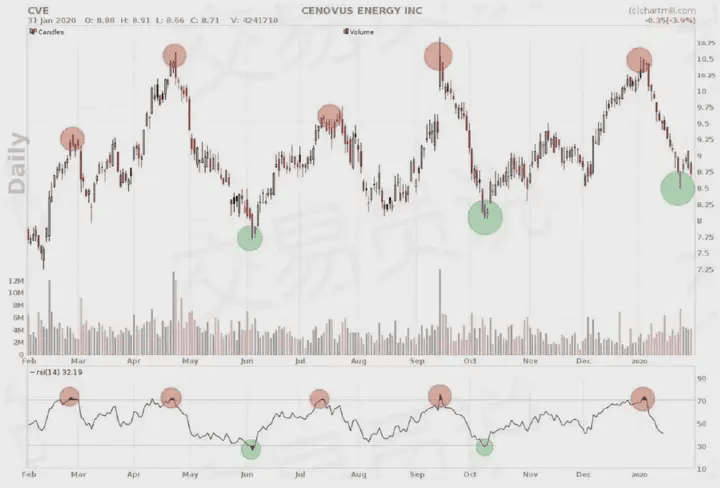
The red circle in the figure represents a sell signal, and the green circle represents a potential buy signal. Any trader who bought at the green circle and sold at the red circle made a very substantial profit!
This chart shows that RSI levels provide good signals mostly in sideways markets.
3 Different Ways to Use These Levels in Your Trading Strategies
We emphasize that the reliability of the RSI indicator is highly dependent on the market phase of a stock or market.
We distinguish the following stages:
◎ The price is in a sideways channel (consolidation area).
◎ Prices show a clear upward trend.
◎ Prices show a clear downward trend.
1. Horizontal Price Channel
In a sideways price channel, we have seen that classic buy and sell signals (buy <30, sell >70) are relatively reliable.
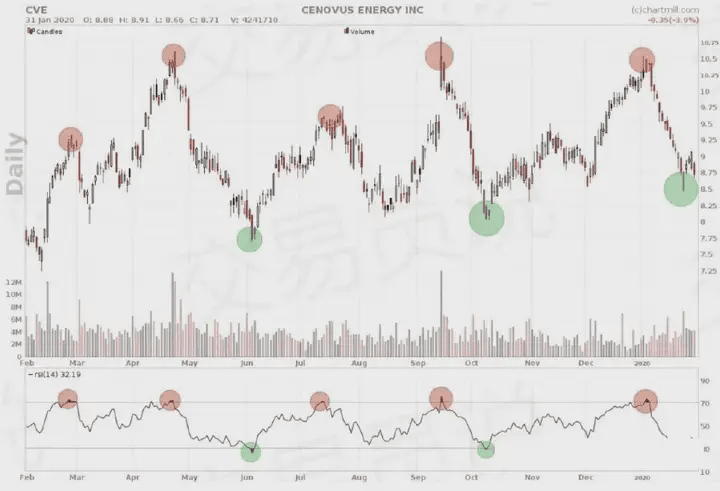
The stock price has been moving roughly within a broad sideways channel between $10.75 and $7.50. Each time it hits one of the two boundaries, the price either falls or rises. In this case, the RSI is providing accurate signals.
2. Uptrend
Classic methods are much less effective in price movements with a clear upward trend. The strong upward trend is clearly visible in the chart below.
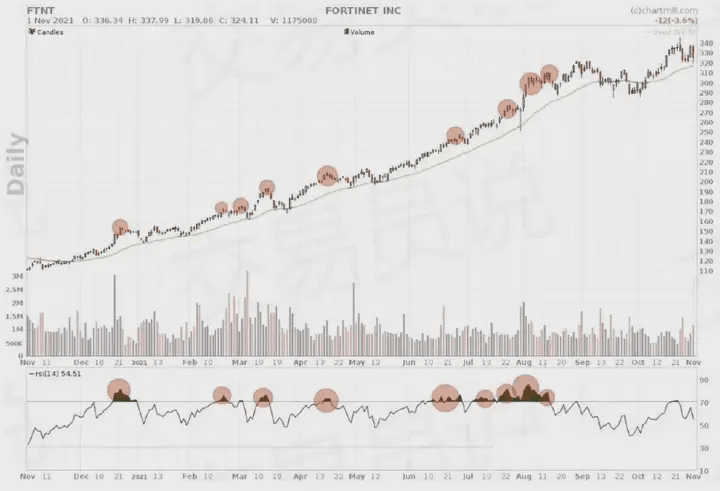
As long as the trend continues to rise, it is recommended to ignore sell signals. In this case, you can try to buy on temporary dips within the uptrend.
Of course, you can also use the RSI indicator for this purpose. In the image below, we show the same chart, but omitting the sell signal and marking the moments when the RSI value fell below the 50 level.
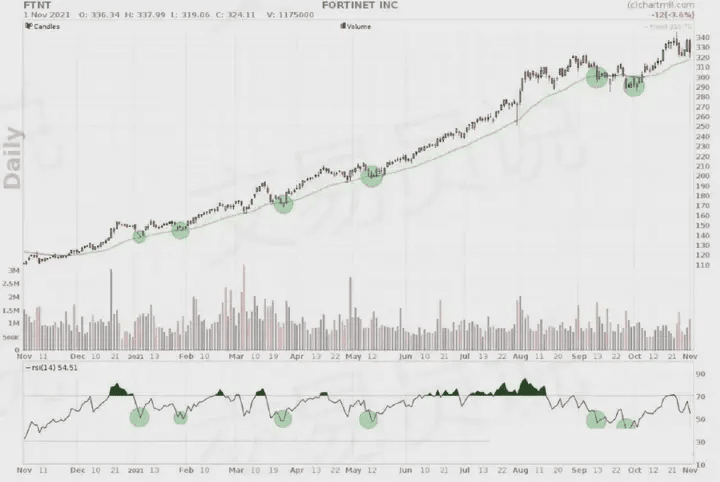
During an uptrend, buying when the RSI dips below 50 often provides very good results and allows you to add to your position in the same stock (or another instrument).
3. Downward trend
Similar to an uptrend, during a sharp downtrend, the RSI can also be used to short if the price temporarily rebounds. In the chart below, we have marked the points where the trend indicator indicated a downtrend (red line), as well as the occasional price rebounds where the trend indicator turned neutral (grey) but never turned positive (green).
In these moments, when the RSI value exceeds 50, the indicator shows a sell signal.
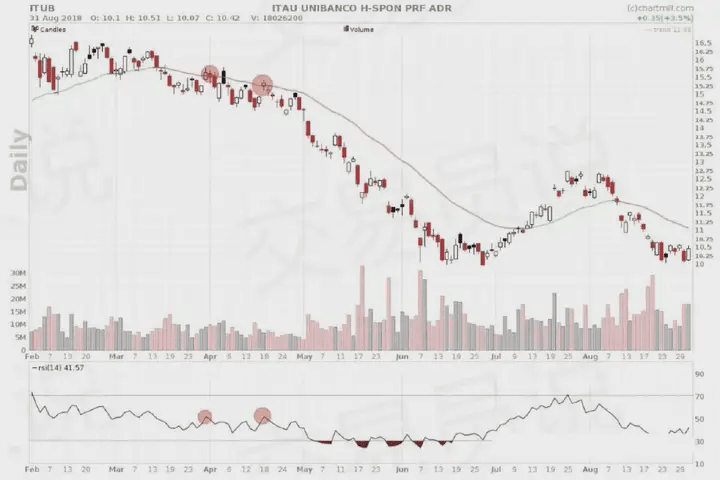
“In stocks showing strong price trends (up or down), the classic lower and upper limits (30 and 70) are in many cases too extreme. In such cases, the 50 level is more appropriate for identifying overbought or oversold periods.”
The Power of Divergences: Early Detection of New Price Trends
Divergence means a difference between the price evolution on the chart and the indicator movement.
Because such divergences often occur near the end of an existing long-term trend, active investors use them to identify early changes in the long-term price trend and thus open new positions in the direction of the reversal trend.
Divergences are categorized as bullish (positive) and bearish (negative).
Bullish RSI Divergence
A bullish divergence occurs when the price chart is still showing lower bottoms, but the RSI chart lines are moving in the opposite direction. This is a signal that the strength and momentum of the downtrend are waning (at least temporarily), increasing the likelihood of a temporary price rebound.
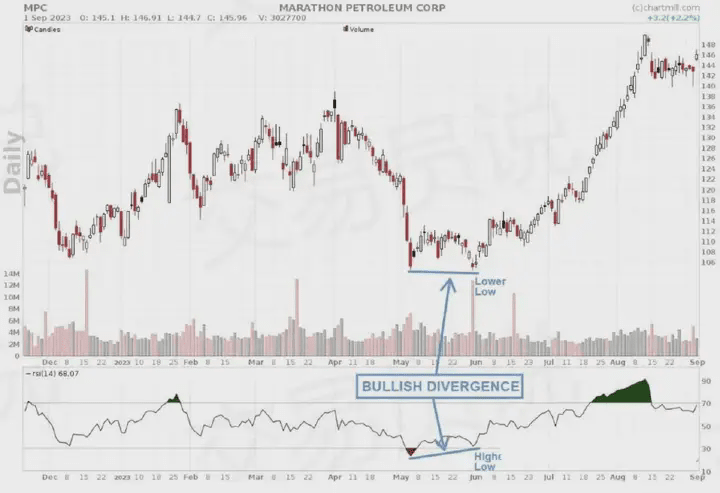
Bearish RSI divergence
A bearish divergence occurs when an indicator shows lower tops while prices are still rising. This suggests that the strength and momentum of the rise are waning (at least temporarily) and that a (medium-term) price decline may be on the horizon.
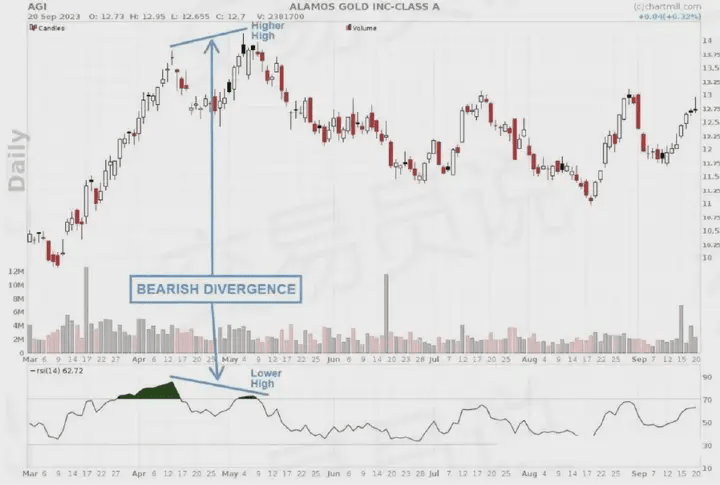
Hidden Divergences: Taking Advantage of Temporary Price Changes within an Existing Trend
This form of divergence is a derivative of the classic divergence and mainly occurs in stocks showing a clear upward or downward trend.
Hidden divergences appear when prices temporarily drop during an uptrend or temporarily rebound during a downtrend.
Example 1: Hidden Divergence in an Uptrend
The image below shows a chart of Evercore stock, which has been in an uptrend since early June 2023. The recent price decline has resulted in the price forming new higher lows, but in terms of the RSI, it has formed lower lows, creating a Bullish Hidden Divergence.
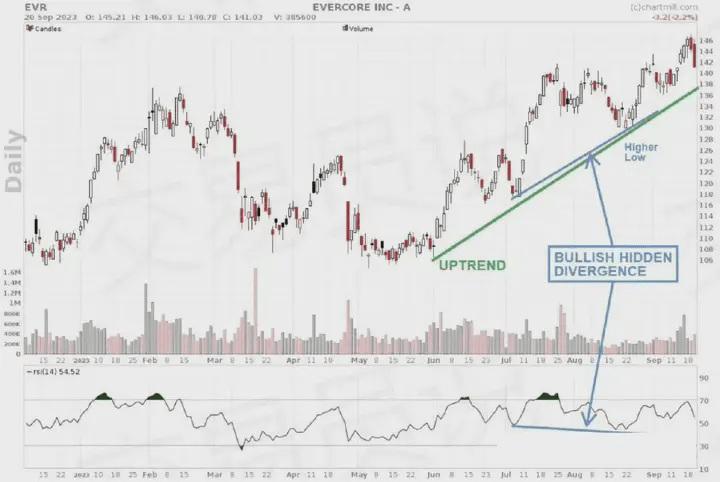
Example 2: Hidden Divergence in a Downtrend
Similar hidden divergences also occur during downtrends. Chemours stock peaked between July and August 2023, and prices subsequently declined, forming several consecutive lower lows. However, the recent lower highs in price have formed higher lows in the indicator, which is identified as a bearish hidden divergence.
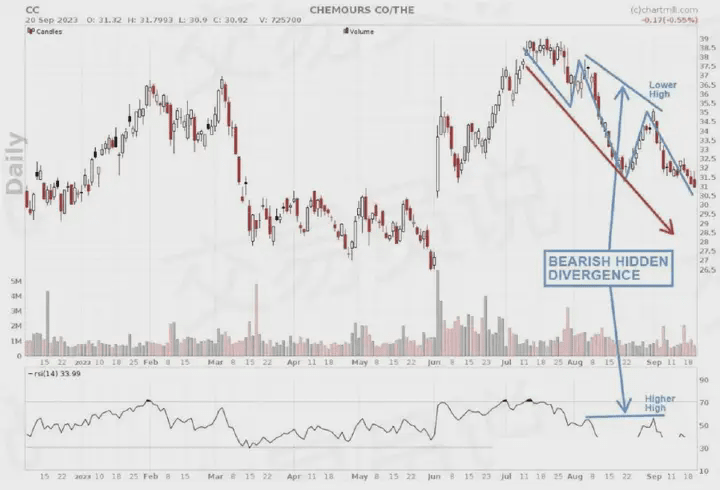
How to Use the RSI Indicator for Swing Trading
As we mentioned at the beginning, the Relative Strength Index (RSI) is one of many technical indicators that technical analysts use to profit from short- to medium-term price fluctuations in the market.
Now that we have understood the basics of the RSI, we will go through the different steps involved in successfully using the RSI indicator in a swing trading strategy.
1. Choose the right time frame
A typical swing trading strategy holds positions for days to weeks, so positions are also held overnight.
The default setting for swing trading is a 14-period on the daily chart, which corresponds to a 14-day timeframe.
Shorter timeframes generate more signals, but also increase the margin of error, while using longer timeframes can miss some price fluctuations.
2. Identify current trends
Trading with the primary trend offers the highest probability of success. For example, you can use the 200-day moving average to identify the long-term trend. For long positions, only select stocks whose long-term moving average is trending upward and whose prices are trading above it.
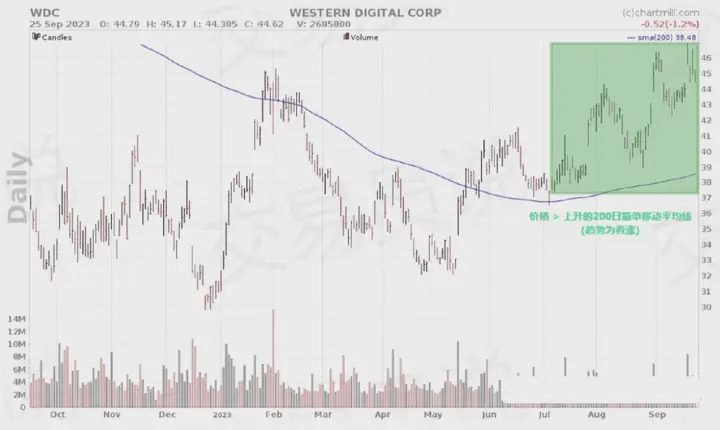
Another purely visual way to determine the current trend is to use an ascending trendline (requires at least three connected points).
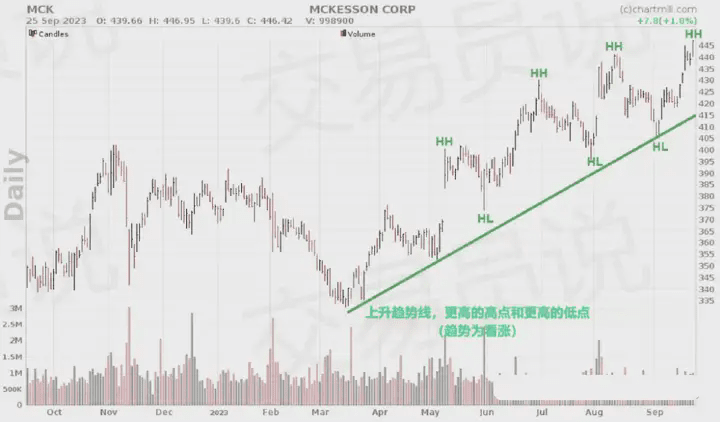
3. Identify (and optimize) RSI signals
As we mentioned above, RSI values of 70 and 30 are usually used to identify overbought and oversold assets respectively. These levels may indicate potential trend changes.
However, don't get too hung up on these levels; many factors depend on the momentum and strength of the existing trend. For example, in a strong uptrend, a temporary price reversal won't always cause the RSI to fall below 30.
Likewise, a temporary rebound in prices during a strong falling market does not necessarily mean that the RSI will rise above the 70 level.
In the above case, a valid buy or sell signal may have been triggered when the RSI value turned back from the 50 level.
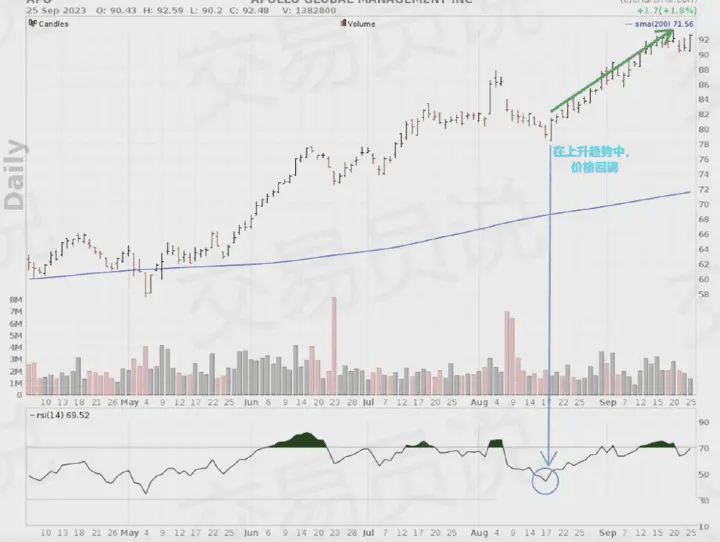
4. Don’t rely solely on indicators
Technical analysis and its indicators do not guarantee trading success. Trading purely based on this or any other indicator is the quickest way to lose money fast!
As mentioned above, you should trade only in the direction of the long-term trend. After all, this will help you avoid many false signals.
Additionally, always pay attention to price action. Chart patterns, candlestick patterns, and support and resistance levels that coincide with indicator signals are important confirmation signals that can significantly increase the reliability of your trade setups. Remember, it's not the quantity of signals that matters; it's the quality.
5. RSI Divergence
We have already learned about the types of divergences and their meanings in the previous section. Hidden divergences are particularly important when looking for entry points in a strong trend.
Hidden divergence is a derivative of classic divergence and mainly occurs in stocks showing a clear upward or downward trend.
Hidden divergences appear when prices temporarily pull back during an uptrend or temporarily rebound during a downtrend.
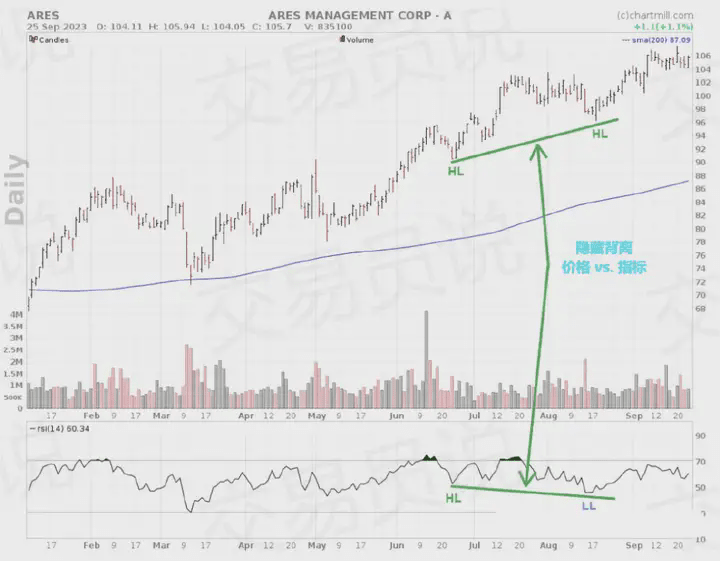
6. Accurately determine entry points and stop-loss points
Create a trading plan and execute it accordingly!
Determine your entry points and stop-loss points in advance based on your strategy. This ensures you can accurately determine and limit your risk. After all, protecting your account capital is every trader's top priority.
The exit point can be a predetermined fixed price level, but another option is to use a trailing stop to profit from the trend for as long as possible and protect a larger portion of the accumulated profits if the price moves further in the favorable direction.
7. Position Sizing and Risk Management
Just as important as the trade setup itself is how you determine your position size and its associated risk (in relation to the stop loss you set).
Only traders who can effectively manage losing positions and keep losses small can achieve long-term success. Five consecutive losses of 1% of your total capital are not disastrous. However, a few open positions that individually cause a portfolio loss of tens of percentage points is catastrophic!
Frequently Asked Questions
1. What is the difference between RSI and Relative Strength?
The terms "RSI" and "Relative Strength Index" are sometimes confused because they both contain the term "relative strength." However, they refer to completely different concepts:
● Relative Strength Index (RSI): is a technical indicator used to measure the strength and momentum of price movements in financial instruments. It is an oscillator with a range between 0 and 100. By comparing the magnitude of recent gains and losses over a specific period (usually 14 days), the RSI helps traders identify overbought and oversold market conditions, potential trend reversals, and divergences between price and momentum.
Relative Strength (Relative Strength, in investing): This tool measures the performance of one investment or asset class relative to another. It's used for portfolio management and asset allocation, and is not an indicator like the RSI. Relative strength can be calculated by dividing the performance of one asset class (or investment) by the performance of another. This is used to determine which assets are outperforming (outperforming) or underperforming (underperforming) relative to a benchmark or another asset.
2. What is the difference between RSI and Stochastics-RSI?
Like the regular Stochastic indicator, the Stochastic-RSI is a momentum indicator primarily used to identify overbought or oversold levels. The addition of the word "RSI" signifies that the Stochastic-RSI is a derivative of the regular RSI. Unlike the regular Stochastic, the Stochastic-RSI relies on the RSI value rather than the price of the underlying asset.
However, the formula used to calculate the value remains the same.
3. Is RSI a good indicator?
The relative strength index is a valuable tool in technical analysis, but traders and investors should be aware of its limitations.
For example, it's often used to identify overbought (above 70) and oversold (below 30) conditions. However, these levels don't provide certainty. Markets can remain in extreme conditions for extended periods, and relying solely on the RSI for entry and exit points can (and often does) generate false signals.
The same applies to so-called divergences (when the RSI and price move in opposite directions). This is a sign of a potential reversal, but it's not always reliable. Such divergences can also persist for quite a long time, leading to missed trading opportunities or premature market entries.
Furthermore, its effectiveness varies depending on the selected period (usually 14 days). Shortening the period makes the indicator more sensitive but may produce more false signals, while lengthening the period reduces sensitivity but may cause delayed signals.
This does not mean that RSI signals have no value when combined with other technical or fundamental information.
4. Can RSI be used for day trading?
Yes, it is very popular among day traders. It is a versatile technical indicator that can be applied to various time frames, including intraday charts, making it suitable for day trading strategies.
Day traders can adjust the period to suit their trading style and the asset they are trading. Shorter periods (such as 9 or 5) are more sensitive and suitable for ultra-short-term trading, while longer periods (such as 14 or 21) are more suitable for slightly longer-term day trades.


